Introduction: The Introduction Title
Not everything that is faced can be changed, but nothing can be changed until it is faced. – James Baldwin. This speaks to our current energy crisis and the ambitious solutions we're just beginning to explore. Imagine a future driven by artificial intelligence where a swarm of satellites harnesses solar energy. Does AI possess the ability to transform speculative science fiction into our reality, maximizing the power of the stars for Earth’s endless energy hunger?
Visualize for a moment: a dynamic army of satellite workers tirelessly dancing around a star, capturing sunlight as effortlessly as a group of sunbathers spread across a crowded beach. With AI as the master choreographer, is it possible to pull off such a cosmic ballet? Ridley Scott's galaxies flashing before our eyes, Carl Sagan's enchanting words echoing in our ears. We seem on the brink of a sunset never darkening. All powered by Dyson's vision. Can this be made possible? Let's unveil the magic puzzle pieces that AI and the Dyson Swarm combine to solve our future energy needs.
Artificial Intelligence (AI), when applied to the concept of a Dyson Swarm, acts as the architect, designer, and coordinator of millions of satellites that capture the immense energy from stars. This strategic synergy could transform a once theoretical megastructure into a tool for limitless energy production.
The Concept of a Dyson Swarm
The concept of a Dyson Swarm extends beyond mere science fiction; it's a vision where humanity taps into the cosmic power, leading to groundbreaking implications. Imagine if Nikola Tesla's dreams of abundant energy were realized not through terrestrial means but a celestial one, engineered by AI powerhouses like Sam Altman's OpenAI and Tesla's visionary genius, Elon Musk.
Origins and Theoretical Foundations
The Dyson Sphere concept, first proposed by physicist Freeman Dyson, envisioned a colossal energy-capturing shell around a star. However, practical challenges led visionaries to favor the more feasible Dyson Swarm. It simplifies the idea by suggesting numerous satellite entities, each collecting solar energy independently. Stephen Hawking saw the potential, citing the vast amount of untapped energy in the universe. Imagine turning the space around our sun into the ultimate solar panel. What it can achieve is limited only by our grasp... and our AI robots.
The Mechanics of a Dyson Swarm
Constructing and maintaining a Dyson Swarm requires mastery of orbital gymnastics and a dash of architectural flair. AI steps in as the conductor of this cosmic orchestra, ensuring each satellite functions in symphony. All while considering energy transmission, which would make an electric company gasp in wonder. Orbits calibrated with mathematical precision akin to Isaac Newton’s calculus might be needed. As we advance in fields like Caltech's physics labs, technological breakthroughs can turn starry fantasies into tangible frameworks orbiting the sky.
The Role of Artificial Intelligence
In the grand scheme of things, there’s no denying that Artificial Intelligence (AI) has become the new superhero of innovation. Whether it’s brewing the perfect cup of coffee or plotting your Friday night dinner date, AI pulls the strings. Now, imagine AI stepping up to an astronomical challenge: coordinating a Dyson Swarm. Hold on to your hats as we explore how this tech wizard could optimize the design and functionality of millions of satellites in space.
Designing Satellite Systems
Ah, the sweet science of satellite design. It sounds like rocket science because, well, it essentially is! But don’t worry, with AI's sophisticated tools, the design process isn't as daunting as it may seem. AI can crunch numbers faster than you can say "Hubble Telescope." Imagine using MIT's generative design algorithms to whip up sleek solar satellites that balance cost, materials, and energy efficiency with the finesse of a Cirque du Soleil performance. Curious minds might wonder, how does AI do all this with an efficiency score that only a quantum computer would admire? Well, let's just assume it involves a mix of machine learning, really deep data lakes, and fancy math—the kind you and I wisely avoided in college.
Coordinating Operations Across Millions of Satellites
Picture this: You're at a concert, it's crowded, chaotic, and yet somehow the bass, treble, and every single fan's eardrums stay perfectly coordinated. Much like that, AI orchestrates the operation of millions of satellites in space with seamless precision. Through ingenious algorithms, AI manages everything from scheduling and navigation to ensuring your newbie satellite doesn’t befuddle its orbital dance and bump into others. Fault tolerance is its ace card: AI can predict problems before they happen, which removes the need for good old human panic. This kind of real-time operational coordination brings to mind the masterpiece of organizing a global flash mob in zero gravity.
Energy Collection Strategies
Energy collection is no joke, especially when it involves a celestial-sized operation like a Dyson Swarm. As we venture into deep space, AI's role shifts from being just a coordinator to acting as a maestro of performance optimization. For AI, turning cosmic rays into renewable power is more akin to playing a galactic symphony on a fleet of solar panels.
Adaptive Solar Collection
Here's where it gets intriguing. AI is like the ultimate solar panel whisperer. By using machine learning, it helps panels tweak their positions as smoothly as a sunflower following the sun across the sky. With freaky accuracy, AI adapts to solar intensity, effectively saying, "Move a bit to the left... now hold." It's the same technology that might have saved you from lifelong crooked selfies with your smartphone's adaptive focusing. By optimizing angles and positions with laser focus (almost literally), AI ensures that solar panels aren't just stand-ins but active participants in space's greatest energy grab.
Real-Time Data Analysis for Performance Optimization
Consider AI as the obsessive fitness coach of satellite data. Always analyzing, it continually processes and recalibrates, ensuring the swarm is on its A-game. With the power of data analysis, AI can provide feedback quicker than you can say "megajoules." It tells us how to keep the energy harvest crisp and clean, kind of like tuning up a classic car with a supercharged algorithmic boost. Who knew AI's data-driven pep talks could send satellites into overdrive for peak performance, almost as if it had its version of turbo mode?
Challenges and Solutions in Building a Dyson Swarm
Constructing a Dyson Swarm isn't like assembling a Lego set; it's a gargantuan undertaking fraught with challenges. One doesn't just throw solar panels into space and hope for a limitless energy supply. Nope. It requires meticulous planning, cutting-edge technology, and solutions that stretch the imagination.
Resource Allocation and Production
Picture this: You need enough materials to build not one, not two, but millions of satellites. Imagine the logistics! The constraints aren't just monetary but encompass materials, production capacity, and time. Have you ever tried pulling off a multi-stellar construction project?
- Materials: We’re talking lightweight yet durable materials. Think graphene and other cutting-edge composite materials. Imagine the quantities required!
- Manufacturing: How do you scale production to cosmic levels? AI might just be the wizard behind the curtain in managing resources and optimizing manufacturing processes.
- Logistics: It’s all about getting pieces where they need to be. AI could play a role here, ensuring that every piece is positioned correctly and efficiently.
A critical concern remains in leveraging AI to balance costs, availability, and efficiency—imagine a galaxy-sized assembly line!
Space Debris and Orbital Management
Space isn't as empty as one might think. There's a junkyard of defunct satellites, debris, and cosmic clutter zooming around at 17,500 miles per hour. What happens when your precious satellites collide with those unwanted cosmic leftovers?
- Monitoring: AI can serve as traffic control, keeping tabs on space debris and ensuring safe trajectories.
- Collision Avoidance: Algorithms could predict potential crashes and redirect satellites, thereby ensuring operational longevity.
Managing space debris is like playing interstellar dodgeball—miss once, and you're out. But not without AI to shield the way.
Future Implications and Ethical Considerations
Embarking on a journey to build a Dyson Swarm isn't just about harnessing energy; it's about reshaping humanity's future landscape. What awaits us as we unlock this Pandora's Box of infinite energy potential?
Societal Impact of Energy Abundance
What if energy became as abundant as air? Cities glowing brighter than ever, industries thriving on boundless resources, and nations redefining their energy policies. A Dyson Swarm could propel us into a golden age of progress, but at what cost?
- Economic Shift: Imagine a world where energy costs plummet. How would this impact industries reliant on fossil fuels?
- Environmental Strategies: With limitless clean energy, strategies would shift from conservation to reimagining sustainability on a global scale. Picture a world driven by legacy technology being slowly replaced.
- Geopolitical Impact: Countries currently influential due to energy resources might see a power shift towards those mastering the stars.
Does anyone else feel like we’re standing at the edge of a new Renaissance?
Ethical Considerations in AI and Energy Utilization
Ah, ethics—humanity's evergreen challenge. Imagine if AI harnessed the power of a billion suns. How do we ensure these algorithms act in humanity's best interest?
- Autonomy vs Control: How much control should AI systems have in energy management, and do humans merely supervise?
- Bias and Decision-Making: Bias in AI systems is a real risk. Who programs the rules when the stakes involve global energy distribution?
- Dependence on AI: With systems operating autonomously, there's the potential for over-reliance. What happens if these systems fail?
Just as it's essential to ask, "Can we do this?" it's as crucial to ask, "Should we do this? And, who decides what should be done?"
AI Solutions: How Would AI Tackle This Issue?
Considering the aforementioned challenges, AI can provide comprehensive solutions to facilitate the development of a Dyson Swarm:
Mapping Out Resources
AI could utilize vast amounts of astronomical and logistical data to identify optimal locations for satellite placements and energy transmission routes. Advanced data analysis techniques, such as geographic information system (GIS) and machine learning algorithms, would help in selecting areas with minimal interference and maximize energy absorption. Moreover, crowdsourced data from space agencies, like NASA or ESA, could further refine the models that inform decisions regarding satellite deployment.
Simulation and Modeling
AI could facilitate simulation-driven approaches to test different configurations for satellite swarms under varying environmental conditions. By employing complex simulations using tools like ANSYS or Simul8, researchers can explore different scenarios, adaptive responses, and configurations, allowing for the most efficient designs to emerge before any physical construction begins. Through simulations, insights can be gained into potential technical failures and the identification of optimal responses before they occur in reality.
Autonomous Operations and Maintenance
AI could manage the operational life cycle of satellites, from launch to decommissioning, ensuring minimal human intervention while maintaining optimal performance through self-healing systems. With machine learning algorithms, satellites can monitor their health, report issues, and even attempt to fix themselves using autonomous systems. Projects like IBM Watson have already shown how artificial intelligence can automate complex task management, which could easily be adapted for real-time repairs or recalibrations of satellites in space.
Actions Schedule/Roadmap
Day 1: Assemble a diverse team of scientists, engineers, and policymakers from relevant research institutions and corporations, including experts from institutes like MIT and Stanford University. This diverse skill set will ensure a well-rounded approach to the challenges at hand.
Day 2: Begin a feasibility study focused on AI implementation in satellite development, engaging with AI firms such as OpenAI and Google AI for their cutting-edge strategies.
Day 3: Develop initial algorithms for energy collection optimization through brainstorming sessions that include creative thinkers and capture innovative ideas using AI modeling tools.
Week 1: Conduct multiple brainstorming sessions to explore various satellite designs, using collaborative platforms like Miro to facilitate discussions and design iterations in real-time.
Week 2: Initiate community outreach programs to inform the public and stakeholders, ensuring transparency about the project's goals and progress. Engaging through social media channels and community forums will help build trust and support.
Week 3: Form collaborations with aerospace manufacturers such as SpaceX and Boeing Space and Launch for prototype satellite production, harnessing their existing production capabilities.
Month 1: Analyze initial findings from feasibility studies. Once data is gathered, utilize advanced analytical software Tableau to adapt designs based on feedback and recommendations.
Month 2: Create a virtual simulation environment using tools like Unity to test AI algorithms and satellite designs under different hypothetical scenarios.
Month 3: Commence the development of a prototype satellite for energy collection, leveraging resources from existing space industries. Initiate a partnership with universities for research internships and workforce development in aerospace engineering.
Year 1: Launch the first unmanned prototype into low Earth orbit (LEO) to assess its operational capabilities in space. Incorporate onboard AI to monitor satellite health and optimize energy collection.
Year 1.5: Adjust the prototype based on environmental data and refine operational algorithms. Use real-time data analysis to determine how effectively the prototype is capturing solar energy and make necessary modifications.
Year 2: Prepare for the launch of the first operational swarm, ramping up production based on AI recommendations and models. Establish a mission control center, utilizing technologies like digital twins to simulate and control the swarm's operations and navigation.
Conclusion: The Path Ahead
The landscape of energy production is poised for a transformational shift, one driven by the boundless potential of artificial intelligence. Imagine a world where harnessing the energy of a billion suns through a Dyson Swarm is not just a dream but an attainable reality! As we embark on this ambitious journey, the thoughtful integration of AI technology into every aspect of satellite design, deployment, and operation will be vital. From mapping resources and simulating designs to establishing autonomous systems capable of maintaining high performance, the future of energy holds tremendous promise.
The successful implementation of a Dyson Swarm relies on cross-disciplinary collaboration—bringing together scientists, engineers, policymakers, and the public. Navigating the complexities of this grand project requires not only technological ingenuity but also an ethical framework to address potential societal implications. As we stand at the threshold of this new frontier, it's crucial to reflect on how pooling our intellectual resources can lead to a brighter, greener future—fueling humanity’s dreams and making the impossible possible!
FAQ
What is a Dyson Swarm?
A Dyson Swarm is a big idea about using lots of little satellites that circle a star, like our Sun, to capture energy. Imagine gathering light and heat from a billion stars! Unlike a solid wrap-around ball (which is called a Dyson Sphere), a swarm has many separate satellites working together to get energy.
How can AI help in constructing a Dyson Swarm?
Artificial Intelligence, or AI, can play a helpful role in making a Dyson Swarm happen. Here are some ways:
- AI can design smart satellites that are efficient and effective.
- It can manage the operations of many satellites so they all work well together.
- AI can analyze all kinds of data to make the energy collection process even better.
What challenges are associated with building a Dyson Swarm?
Building a Dyson Swarm isn’t without its problems. Here are some challenges we need to consider:
- Resource Allocation: We need to make sure we have the right materials and tools to create these satellites.
- Space Debris Management: There’s a risk of garbage floating in space, which could hit our satellites. We must find a way to keep everything safe!
- Ethical Implications: As we use AI to control energy resources, we have to think about fairness and who gets to make important decisions.
Why is the concept of a Dyson Swarm significant?
The concept of a Dyson Swarm is super important because it could help us solve some of humanity’s biggest problems. For example:
- If we can gather energy from stars, we could achieve almost limitless power!
- This could help us protect the environment by reducing our reliance on harmful energy sources like fossil fuels.
- A Dyson Swarm could even boost our efforts to explore other planets and stars!
How far are we from making a Dyson Swarm a reality?
We’ve made a lot of progress in technology, but creating a Dyson Swarm might still be many years away. It will depend on how quickly we can develop AI and gather resources. Collaboration across countries and teamwork among scientists, like those at NASA, will be key to making this dream come true!
Can you give an example of how AI is being used today in space exploration?
Yes! Right now, AI is being used on missions like the Mars rovers, which help scientists understand the planet better. The Curiosity rover uses AI to make decisions on its own about where to go and what to study. This technology shows us that AI has great potential in exploring beyond Earth.
What other energy solutions might work with the Dyson Swarm?
The Dyson Swarm could work alongside other energy solutions. Here are a few:
- Solar Farms: These are large areas covered with solar panels on Earth.
- Wind Turbines: They generate energy from wind, just like we generate energy from sunlight.
- Nuclear Fusion: This is another promising energy source that mimics the way stars produce energy.
How can I learn more about AI and space energy?
There are lots of resources out there to learn about these amazing topics! Websites like NASA's Learning Center offer great information. You could also follow news on AI from MIT Technology Review to stay updated.
Wait! There's more...check out our gripping short story that continues the journey: The Ocean's Embrace
Disclaimer: This article may contain affiliate links. If you click on these links and make a purchase, we may receive a commission at no additional cost to you. Our recommendations and reviews are always independent and objective, aiming to provide you with the best information and resources.
Get Exclusive Stories, Photos, Art & Offers - Subscribe Today!
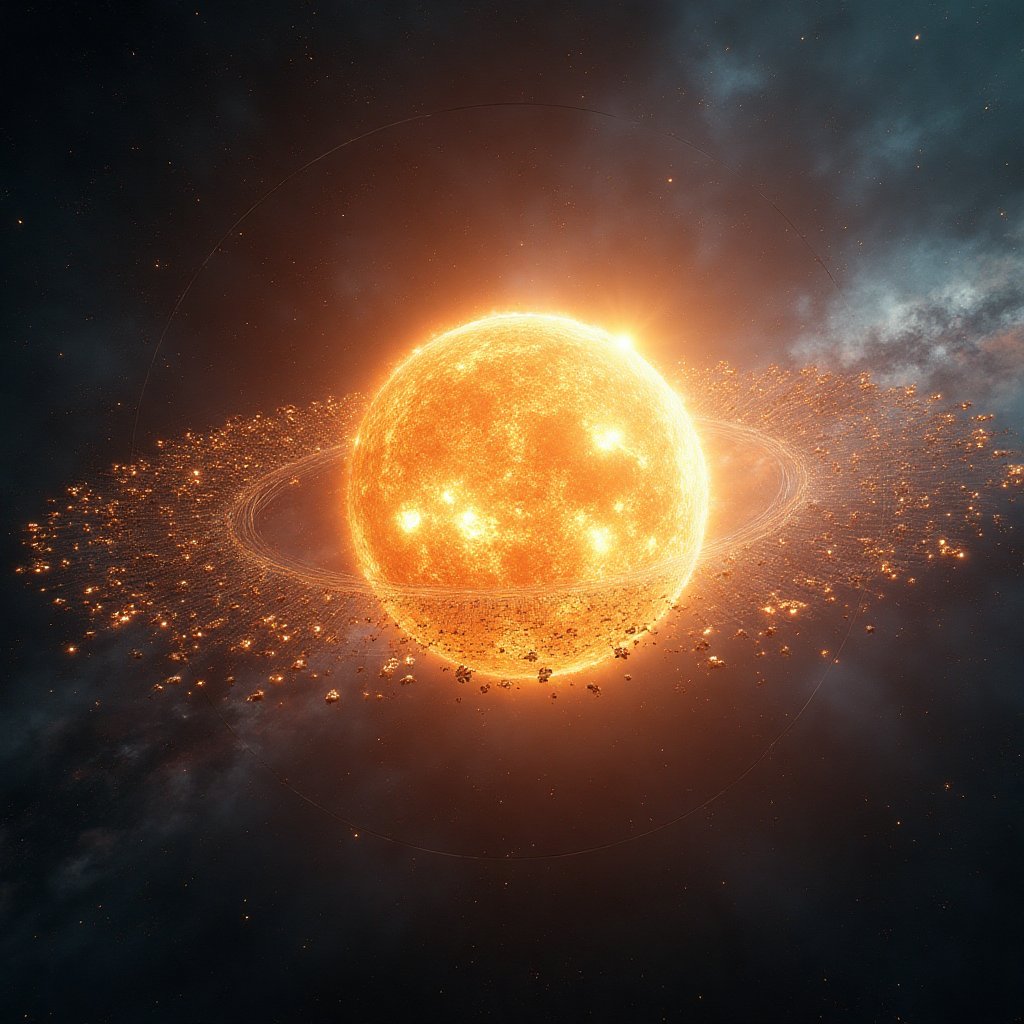
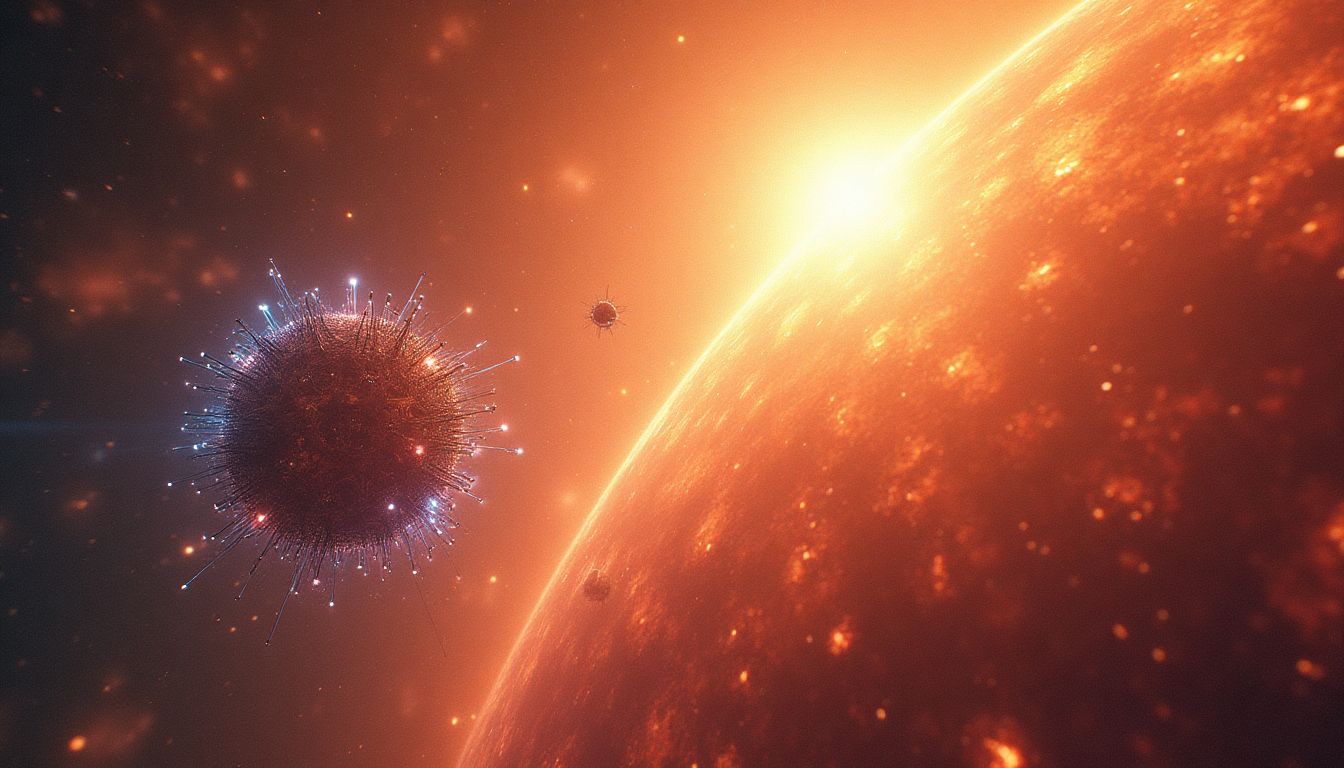
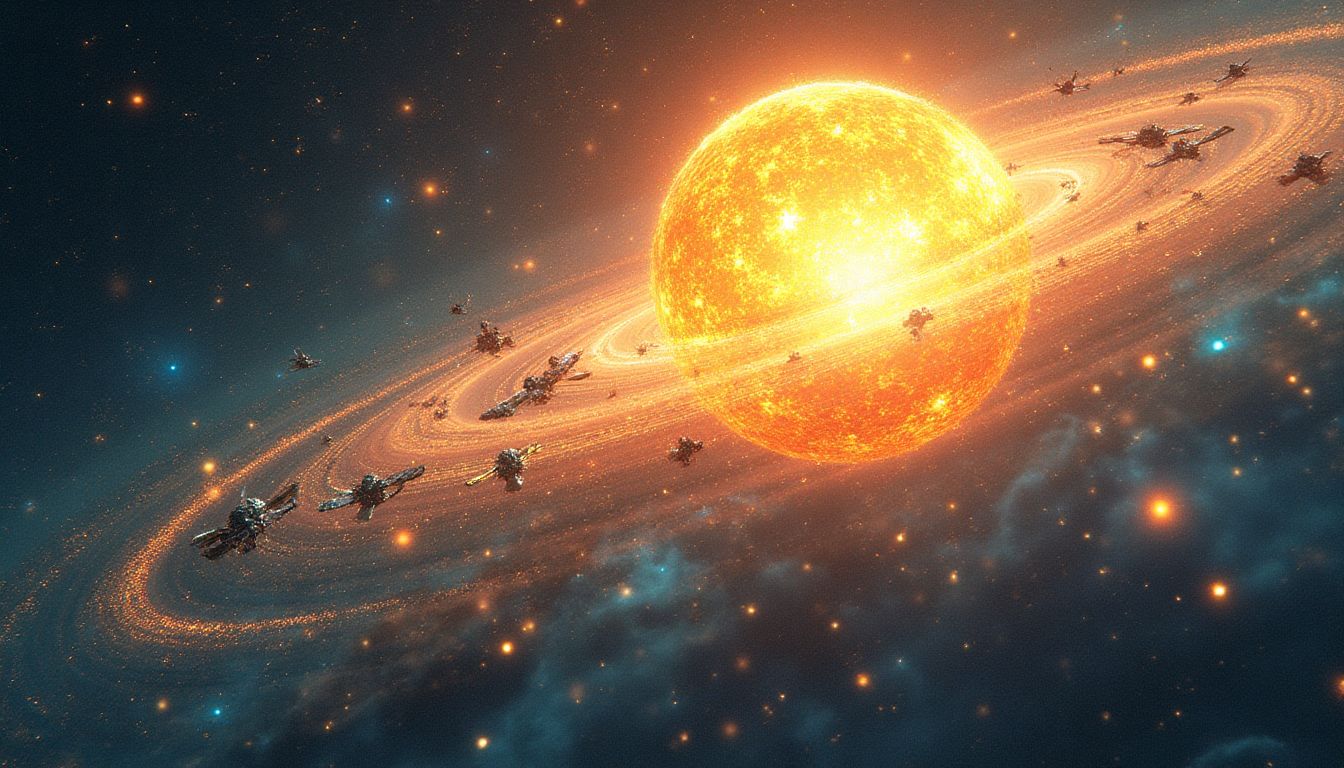
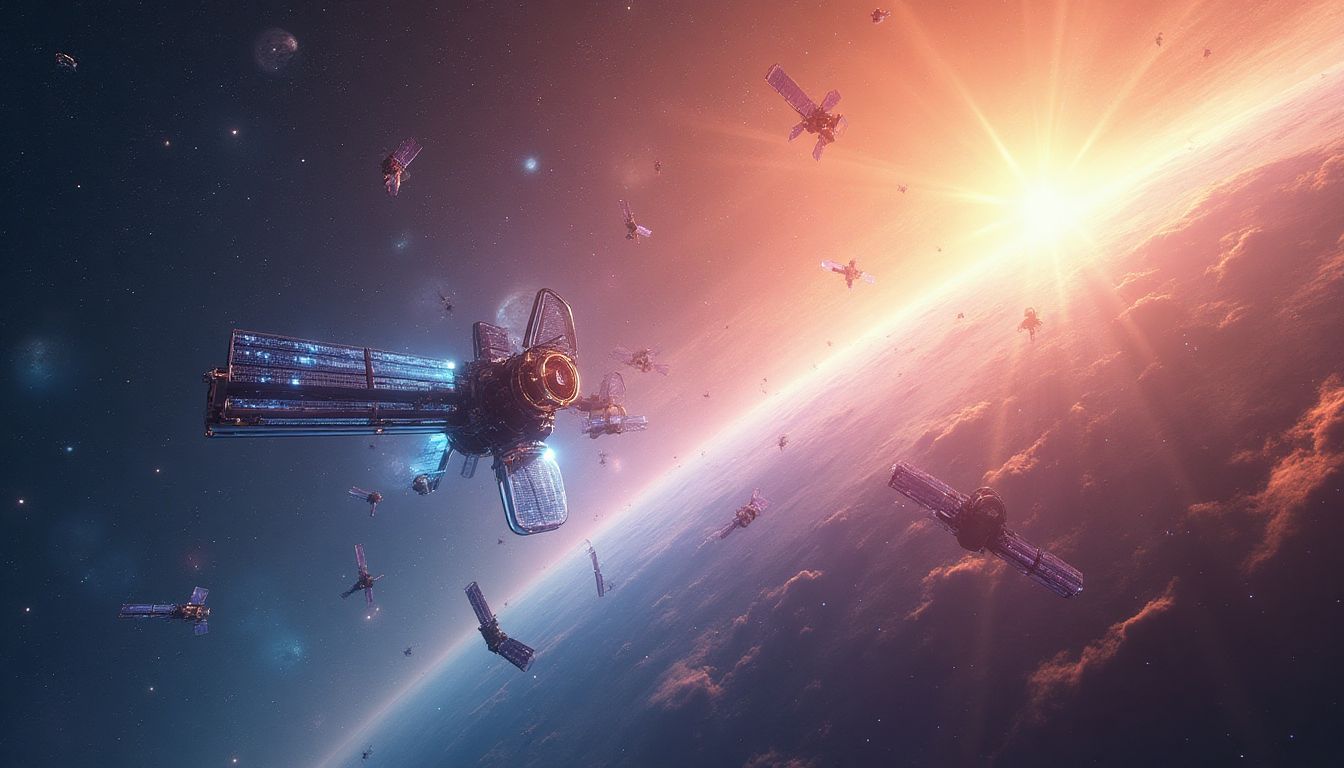
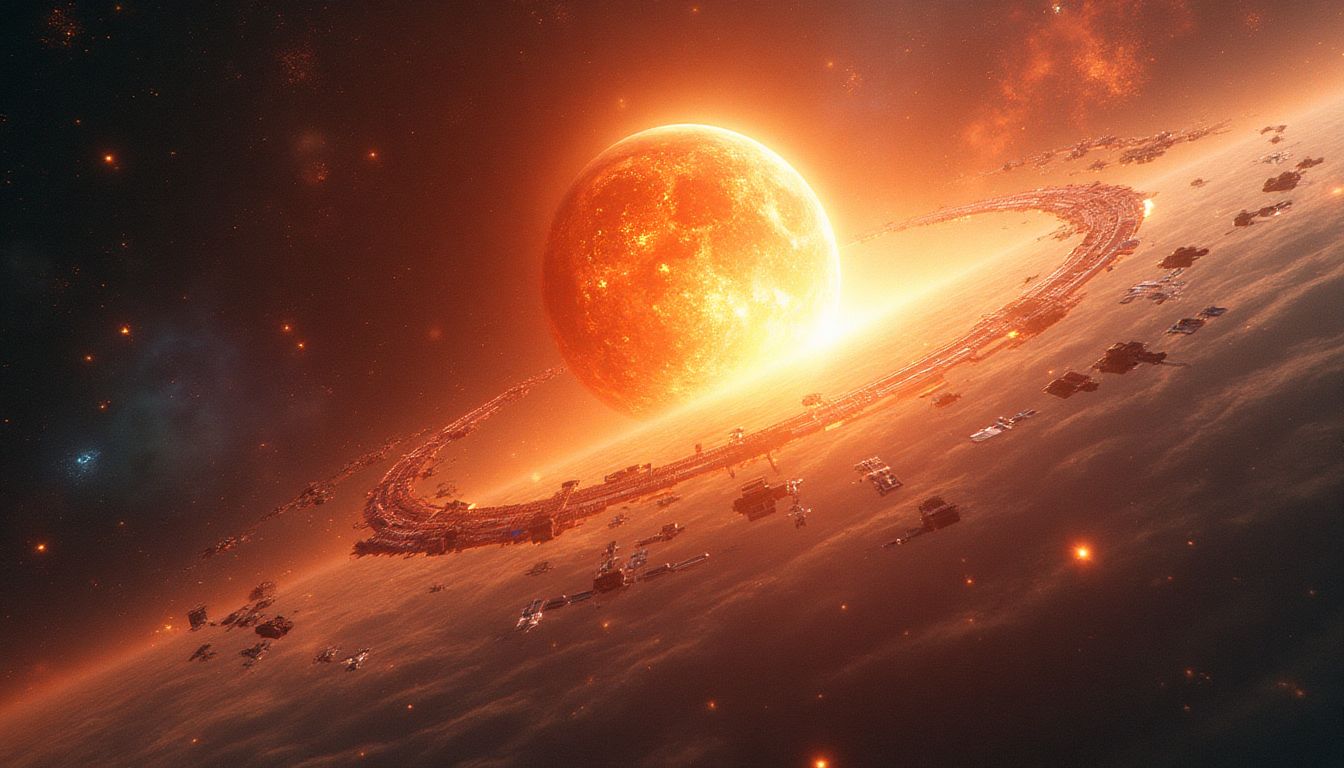






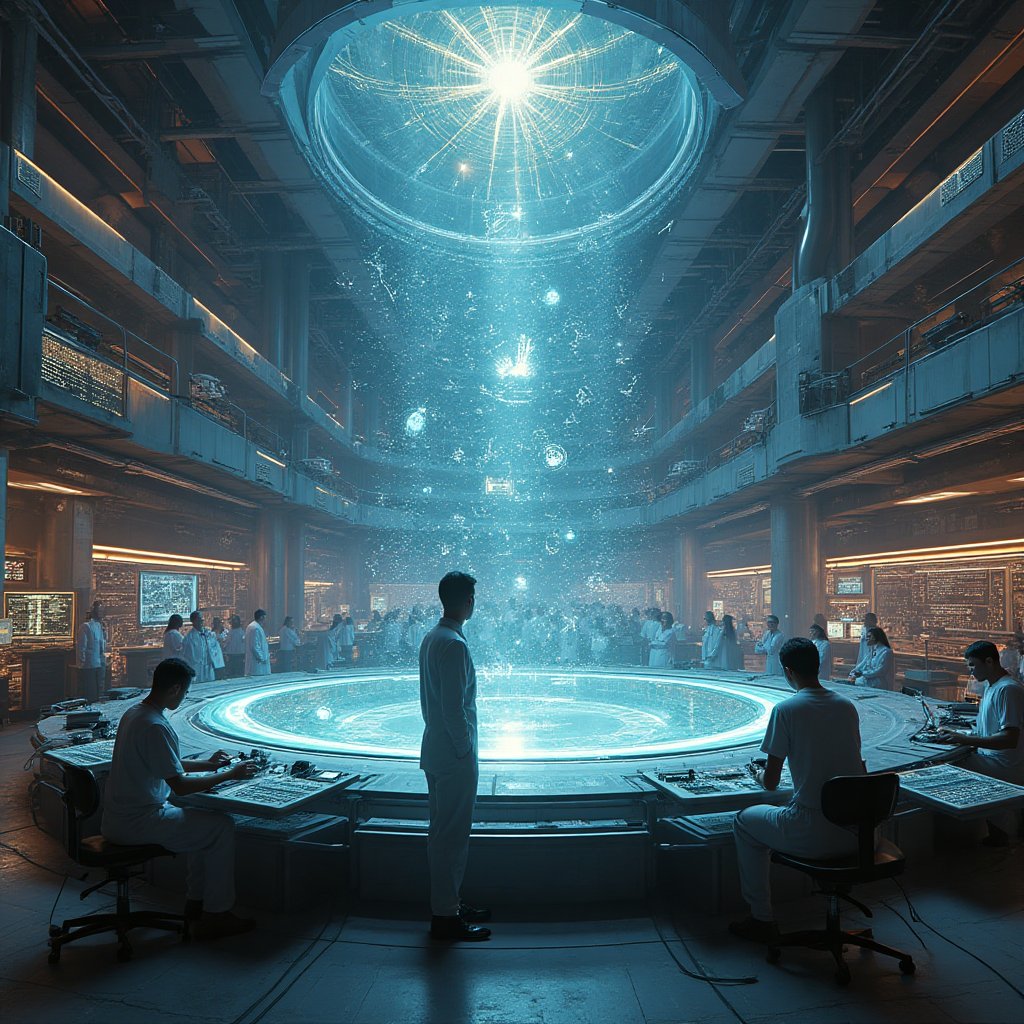

















Post Comment
You must be logged in to post a comment.